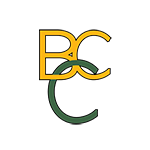Dr. Belinda Barclay-White On Cryoablation
Doctors Panel On Breast Cryotherapy Video Series
Overview
Cryoablation uses extreme cold to kill the cancer and a one to two centimeter area surrounding the cancer. It has been used for many years on the liver, skin, and cervical cancers. However, it is somewhat new in the treatment of breast cancers. Cryoablation causes tissue necrosis (death) by freezing the targeted tissue and damaging the blood vessels that feed the cancer and allow the cancer to grow. After the cancer cells are destroyed, the dead cancer cells are absorbed by the body over a period of time.
The Cryoablation Procedure
Having a cryoablation is similar to having an ultrasound guided needle biopsy of a breast lump. It is performed in an out patient office in an ultrasound room. The doctor will be accompanied by two technologists. You will be awake and able to converse with us during the procedure.
After the procedure, no sutures are required and you may take care of your family and even return to work.
The Cryoablation Procedure
Dr. Barclay-White is participating in FROST, a Study of Cryoablation in the Management of Early Stage Breast Cancer, for patients who prefer an alternative to surgery. This is a phase II clinical study of Z1072. To learn more about the FROST clinical study, please click here.
Cryoablation May Be Appropriate Treatment For
- Early stage breast cancer (invasive ductal breast cancer).
- Benign fibroadenoma (growing and/or painful, and less than 4 cm in size).
- There is increasing scientific evidence that cryotherapy can act like a vaccination stimulating your own immune system to fight your cancer.
- Women with advanced breast cancer that has spread to other organs can also benefit from cryotherapy of the primary breast cancer or metastatic cancers in the breast.
Why Choose Cryoablation Breast Therapy Over Surgical Excision (Lumpectomy)?
If you are a candidate for cryotherapy, we use an FDA cleared cryoablation treatment system.
- Cryoablation is a safe, minimally invasive alternative to surgical excision of your breast cancer.
- It is performed in our office with local anesthesia, with ultrasound guidance and takes about an hour.
- A small steristrip is applied to the skin at the site of the probe insertion and there are no sutures.
- After the procedure, your breast will be swollen for a few hours with minimal to no discomfort.
